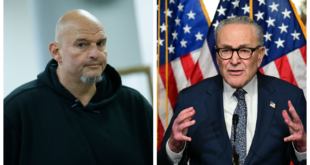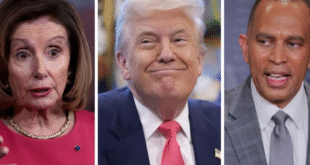Political Landscape Analysis: Shifting Dynamics Shape 2028 Presidential Election Outlook
The American political arena is undergoing substantial transformation as evolving voter sentiment and emerging leadership dynamics begin to influence the trajectory toward the 2028 presidential election. Recent comprehensive polling data from Emerson College provides crucial insights into both current administrative performance and early electoral preferences that signal significant changes ahead for both major political parties.
Presidential Approval Trends and Public Sentiment
President Trump’s approval ratings have experienced a measurable decline since his second-term inauguration, falling from 49 percent to 45 percent over the initial five months of his presidency. This four-percentage-point decrease reflects more than routine polling fluctuation, indicating substantive shifts in public assessment of administrative performance across multiple policy areas and crisis management scenarios.
The current approval metrics reveal a closely divided electorate, with 45 percent approving of presidential performance, 46 percent disapproving, and nine percent remaining undecided. This narrow margin creates a politically sensitive environment where modest changes in public opinion could significantly impact legislative effectiveness and party cohesion moving forward.
More significantly, directional polling shows 52 percent of respondents believe the United States is proceeding “on the wrong track,” compared to 48 percent who view the country’s direction favorably under current leadership. Historical analysis suggests that directional sentiment often proves more predictive of electoral outcomes than simple approval ratings, as it reflects deeper concerns about national trajectory and leadership competence.
International Relations and Crisis Management
The administration’s approach to international relations has emerged as a defining factor in public opinion formation, particularly regarding escalating tensions with Iran. The decision to conduct missile strikes against Iranian nuclear facilities represents one of the most significant military actions in recent presidential history, generating complex public reactions that span the spectrum from strong support to serious concern about regional escalation risks.
Iranian retaliation through rocket attacks against U.S. military installations in Qatar demonstrates the inherent risks of aggressive military postures and the potential for expanded regional conflict. Public response to these military exchanges appears divided, with some citizens supporting decisive action against Iranian nuclear ambitions while others express apprehension about deeper Middle Eastern military engagement.
The coordination challenges with international allies, many of whom were reportedly surprised by the scope and timing of American military action, have raised questions about strategic planning and relationship management. These diplomatic concerns may be contributing to broader public uncertainty about administrative competence in international crisis situations.
Business Community Relations and Economic Policy
The highly publicized deterioration of the relationship between President Trump and technology entrepreneur Elon Musk has created additional turbulence for an administration managing multiple complex challenges. This prominent business relationship breakdown has generated extensive media attention and speculation about broader implications for private sector cooperation with administrative priorities.
The business community’s relationship with current policies has been complicated by aggressive tariff implementations that have created both beneficiaries and challenges across different economic sectors. While some domestic manufacturers have gained from import protection measures, businesses dependent on global supply chains or international markets have faced increased operational costs and strategic complications.
These tensions may represent broader conflicts between populist political positioning and practical requirements of large businesses operating in global markets. Managing these relationships requires diplomatic skill and strategic communication that continues to test administrative capabilities and business community confidence.
Democratic Party Leadership Evolution
The most notable development in early 2028 electoral positioning involves the Democratic Party leadership landscape, where former Transportation Secretary Pete Buttigieg has emerged ahead of former Vice President Kamala Harris in voter preference polling. Buttigieg’s 16 percent support compared to Harris’s 13 percent represents a significant realignment within Democratic Party politics with potential long-term implications for party direction and electoral strategy.
Buttigieg’s rise reflects several important dynamics within the Democratic Party as it processes lessons from the 2024 electoral outcome and prepares for future campaigns. His appeal appears to transcend traditional demographic and ideological divisions within the party, suggesting broad-based support that could prove sustainable through extended primary competition.
The historical significance of Buttigieg’s potential candidacy extends beyond simple polling preferences, as he served as the first openly gay Cabinet secretary in American history during the Biden administration from 2021 to 2025. His emergence as a frontrunner represents substantial evolution in American political culture and Democratic Party acceptance of diverse leadership that reflects broader societal changes.
However, the substantial portion of undecided Democratic voters—nearly 25 percent of respondents—indicates that the 2028 primary landscape remains highly fluid and subject to significant change based on political developments over the next three years. This uncertainty creates opportunities for additional candidates while suggesting current polling may not predict eventual primary outcomes.
Republican Succession Planning and Party Unity
On the Republican side, Vice President JD Vance’s commanding 46 percent support among party voters for the 2028 nomination reflects the traditional advantages of incumbency and administrative association, particularly given constitutional term limits preventing the current president from seeking reelection. Vance’s positioning represents continuity with current administration policies while potentially offering generational renewal that could appeal to evolving Republican constituencies.
The substantial gap between Vance’s support and potential competitors—Secretary of State Marco Rubio at 12 percent and Florida Governor Ron DeSantis at nine percent—suggests early Republican primary dynamics may favor the incumbent vice president unless significant political developments alter party preferences. This early consolidation around Vance could provide strategic advantages in fundraising and organizational development crucial for primary success.
Nevertheless, 17 percent of Republican voters remaining undecided about their 2028 preferences indicates that party succession planning remains incomplete and subject to influence from policy outcomes, political developments, and candidate performance over the coming years. This uncertainty maintains opportunities for alternative candidates while emphasizing the continued importance of political positioning and relationship building.
DeSantis’s relatively modest support represents a notable decline from his previous positioning as a potential Republican standard-bearer, suggesting his approach to challenging Trump’s party influence may have created lasting complications for his national political prospects. This development demonstrates risks associated with intra-party conflicts and the importance of strategic timing in political advancement.
Policy Implementation and Electoral Impact
Current polling reflects voter responses to specific policy implementations and administrative approaches that have characterized the second Trump term. Aggressive tariff policies, international military actions, and domestic political conflicts have created a complex policy environment generating mixed public reactions across different constituencies and geographic regions.
Trade policy approaches have created both beneficiaries and challenges across various economic sectors and regions, contributing to polarized approval ratings reflected in current polling data. Understanding these sectoral and regional variations will prove crucial for both parties in developing effective electoral strategies for future campaigns.
International military tensions, particularly with Iran, have activated different voter priorities and concerns that may influence electoral calculations beyond traditional partisan divisions. Foreign policy competence and crisis management capabilities often become decisive factors in presidential elections, especially when international tensions remain elevated through election cycles.
Domestic political conflicts and administrative turbulence may be creating voter fatigue and desire for political stability that could influence preferences for future candidates demonstrating different leadership styles and communication approaches. This dynamic could benefit candidates positioning themselves as unifying figures rather than polarizing personalities.
Demographic Shifts and Generational Change
Buttigieg’s emergence as a Democratic frontrunner reflects important demographic and generational shifts within the party extending beyond simple polling preferences to encompass broader cultural and political evolution. His appeal to Democratic voters suggests growing comfort with diverse leadership that could influence party positioning on various social and cultural issues moving forward.
Generational dynamics within both parties create interesting tensions between continuity and change that will likely influence candidate positioning and message development over the next three years. Younger voters often prioritize different issues and approach political questions with distinct perspectives compared to older constituencies, creating strategic challenges for candidates seeking to build broad coalitions.
The geographic distribution of support for various potential candidates—both Democratic and Republican—will prove crucial for understanding electoral viability and primary campaign strategy. Different regions have demonstrated distinct political preferences that candidates must navigate successfully to build winning national coalitions.
Economic Policy Implications and Future Outlook
Economic implications of current administrative policies—from tariff implementations to military spending to domestic investment priorities—will likely become increasingly important factors in voter assessment of presidential effectiveness and party competence. Economic performance often proves decisive in electoral outcomes, making economic policy implementation crucial for political sustainability.
Regional and sectoral variations in economic policy impacts create different political dynamics across the country that will influence both party positioning and candidate appeal in various geographic areas. Understanding these economic variations will be essential for developing effective electoral strategies that address diverse constituent concerns.
The relationship between economic policy implementation and international relations creates additional complexity for voter assessment of administrative effectiveness. Economic policies creating domestic benefits while imposing international costs, or vice versa, require sophisticated political communication and strategic planning to maintain public support.
Conclusion: Navigating Political Uncertainty
The current political landscape reflects an environment characterized by significant uncertainty and rapid change that will likely continue influencing American politics through the remainder of the current term and into the 2028 election cycle. The combination of evolving presidential approval ratings, shifting party leadership preferences, and ongoing policy and international challenges creates a complex political environment testing both parties’ strategic capabilities.
For Democrats, Buttigieg’s emergence represents both an opportunity to present renewed leadership and a challenge to build broad coalitions necessary for electoral success. His rise reflects important demographic and cultural shifts within the party while highlighting ongoing rebuilding processes following electoral setbacks.
For Republicans, Vance’s early positioning as the preferred successor creates advantages while emphasizing the importance of continued policy success and political positioning over the next three years. Party succession planning will likely be influenced by administrative performance and resolution of current policy and international challenges.
The substantial number of undecided voters in both parties suggests the 2028 election landscape remains highly fluid and subject to significant change based on political developments, policy outcomes, and candidate performance over the coming years. This uncertainty creates both opportunities and risks for potential candidates and their political organizations as they begin preparation for what promises to be a highly competitive electoral cycle.


